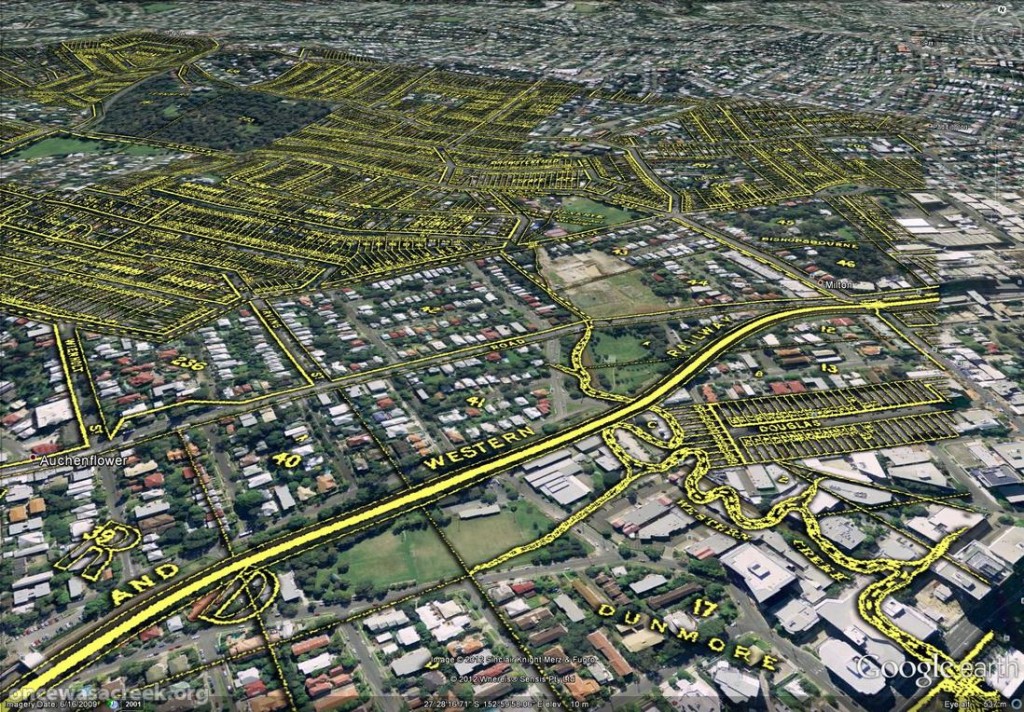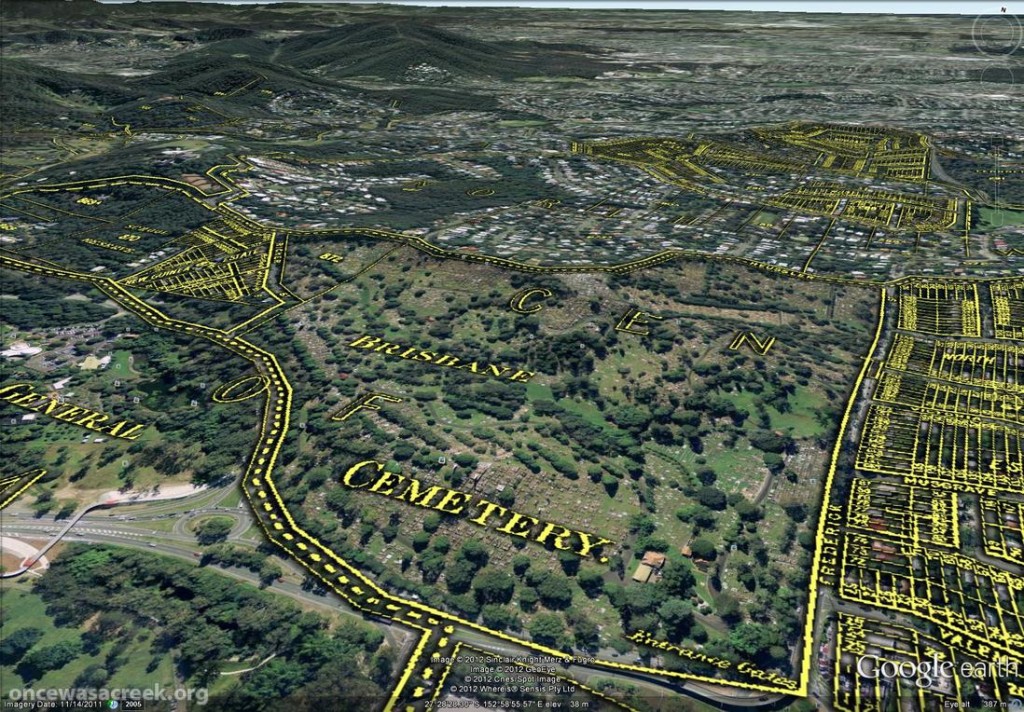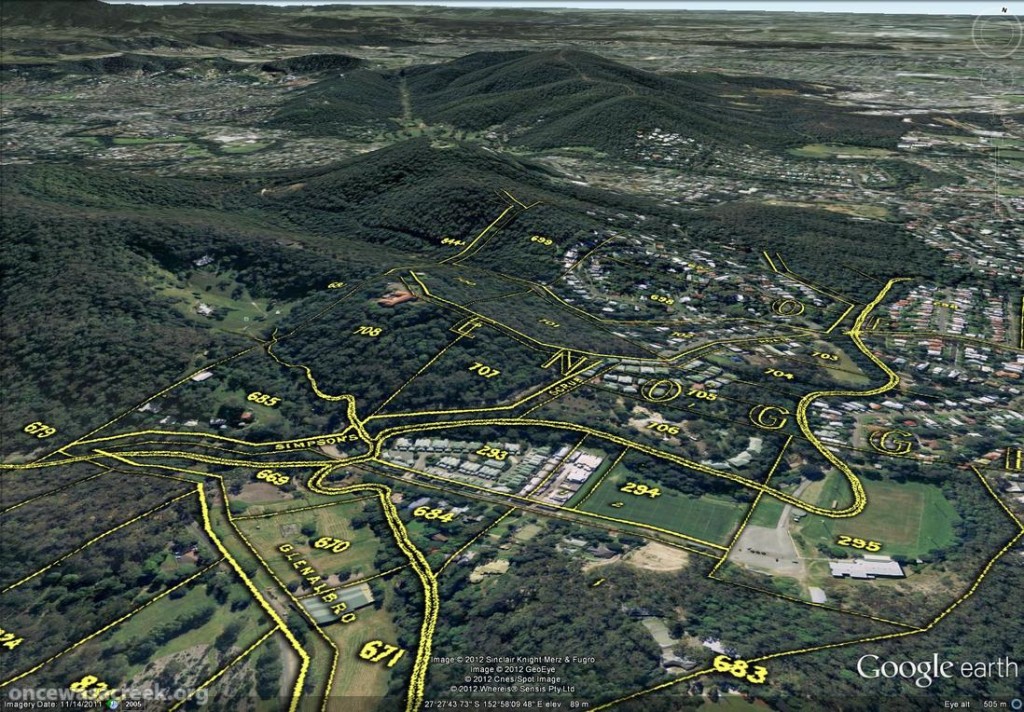When I created this site, my vision was of a neat history of the Western Creek catchment. Each part of the catchment would have a page devoted to it, and each page would fit snugly within the structure of the site. But as the site has progressed I have ended up writing about a wider range of topics and locations than I anticipated. The story of Western Creek has become just one chapter within a broader story about the Milton and Toowong reaches of the Brisbane River, which in turn is part of an even broader story about suburban development in Brisbane.
Consequently, much of what I have written does not fit within the site’s page structure, and resides instead within the blog-style posts of the Newsroom. You may have noticed the tag-cloud in the newsroom that attempts to index the assortment of topics and locations discussed on the site, but if you’ve gotten much value out of it, I’ll be surprised. This site’s content is principally about locations, so it really needs a location-based index — otherwise known as a map.
So here it is: the new site map for oncewasacreek.org. You can also access it via the site’s main menu.
Each marker on the map indicates a location that I have written about somewhere on the site. If you click on a marker, you will get a list of the pages and posts that discuss it. This is the most logical and efficient way I have come up with to index the site’s contents, though it does depend on my vigilance in identifying all of the relevant pages for each location. It is entirely possible that I have missed some, in which case you can feel free to suggest some additions.
Also, if you are watching very carefully, you may notice that the Forum is no longer in the site menu. I have decided to retire the Forum, since barely anyone ever used it.



